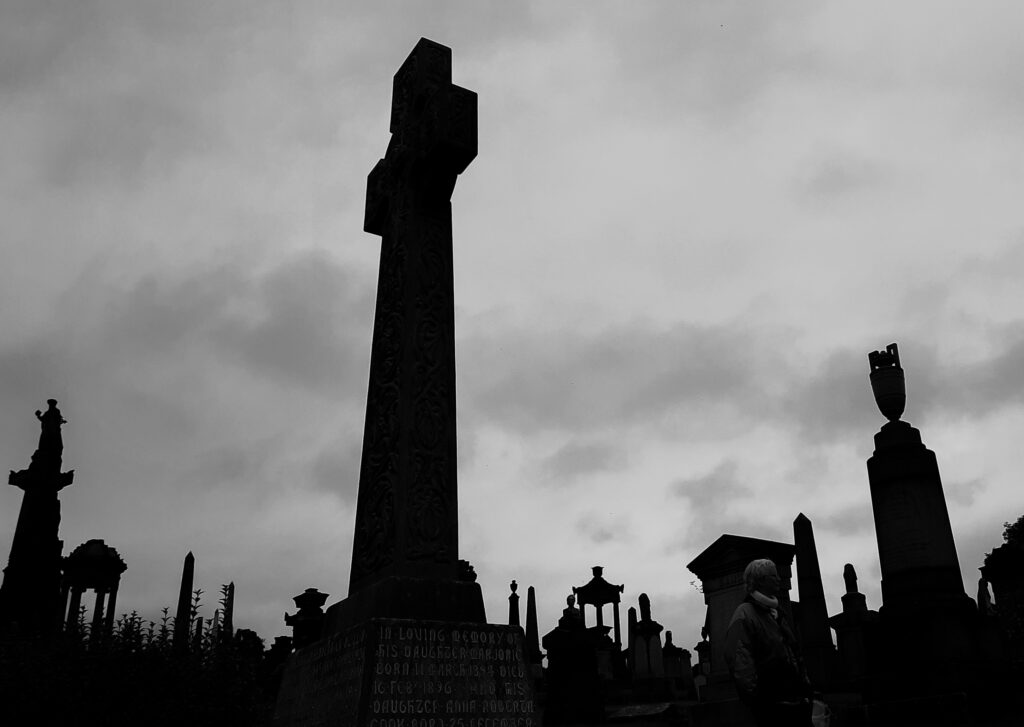In this fourth Lenses post, Nayika highlights the importance of learning one’s history — including the one of the city you are finding refuge in.
“Study the past if you would define the future.”
― Confucius
Cherish the past for us to move forward. The same thing applies to how Glasgow cherishes their past. Glasgow is a city full of history and succeeds in showcasing its history. In every step you take in Glasgow, you will see the past of the city and its people.
Glasgow was known for its port back in the 17th century. Before that, Glasgow was historically religious. In 612 AD St Mungo, a 6th-century Celtic missionary, was buried on the site which is now The Glasgow Cathedral (Glasgow Cathedral, n.d.). The cathedral was initially built as a place to reminisce the virtues of St Mungo. Since 1136 Glasgow Cathedral had been used as a place of worship. Behind the Glasgow Cathedral, there is also Glasgow Necropolis. By definition, Necropolis means the city of the dead. Here, we can see thousands of tombs standing tall in a variety of shapes and sizes, a posh resting place for the Glasgow Merchant in the 18th to 19th century.



Besides, Glasgow also contributed to the glory that we have now, which we usually call globalisation. In the 18th century, Glasgow became the centre of trading in the United Kingdom. One of the ways was by monopolising tobacco and sugar. Indeed, Glasgow was the first tobacco port in the United Kingdom. Glasgow’s geography also pushed it to be the centre of trading in the UK and slowly dominated the trade across the continent. Their enormous port and ships are still showcased in the Riverside Museum. It’s one of the tourist attractions in Glasgow. There, we can see not only many kinds of ships and other vehicles alike, but also exclusive architecture from the famous architect, Zara Hadid.

The past is highly cherished and preserved in Glasgow. Not to mention the mansion of William Cunninghame, one of the tobacco merchants in Glasgow. William Cunninghame had an interest in the tobacco and sugar trade which back then was entirely supported by slave labour. The mansion which was built in the 18th located in the heart of Glasgow’s city centre, still captivates everyone that beholds it. Within 300 years, the Cunninghame Mansion was transformed into the Glasgow of Modern Art (GoMA) on Queen Street. Living up to its name, GoMA is a place to exchange ideas through art and we can also experience the heritage of Glasgow through its magnificent interior. In front of the GoMA, we can see a statue of the 1st Duke of Wellington, Arthur Wellesley. What’s interesting with this statue is the traffic cone placed on top of it. Surely it’s not something new, since it was first documented in 1980 the statue already constantly had a traffic cone on the top of its head. It was not something super serious and was just a prank from the locals. But now it has become one of the most eye-catching landmarks in Glasgow.



GoMA and the traffic-cone-ed statue of the 1st Duke of Wellington are located on the road which is as historical as both of those landmarks. It’s located on Queen Street near Buchanan Street, another historical road in Glasgow. Buchanan Street in the city centre is named after another notable tobacco lord, Andrew Buchanan. He also had two trading firms in the early 1700 and had a significant role in Glasgow’s trading and society(It Wisnae Us, 2022). Now, both Queen Street and Buchanan Street still serve the same purpose as they were before, a trading centre turned shopping centre.
Everywhere we walk, we will always witness Glasgow’s history through its landmarks. From a museum, mansion turned art gallery, road, even traffic cone. All of the landmarks above are connected with trading that shaped Glasgow as what it is today. Even at some point, there are several dark time that needs to be gone through such as the act of slavery. Not to mention, the invention of the steam engine by James Watt – who was also Scottish and you can see his statue on several corners in the city and the university – and his invention pushed mechanisation. This phenomenon, which is famous as the first industrial revolution, had a prominent role in polluting the environment. In 2021 Glasgow acted as a host for COP 26. COP is an annual international event. Moreover, Glasgow has over 3,500 hectares of green space (Glasgow City Council, 2019). It shows that as if the city knows what it did and tries its best to restore it.
Glasgow, in every corner of the city, is filled with the glory of its past. From Glasgow Necropolis, Riverside Museum, GoMa, Queen Street, and Buchanan Street. All of them shaped Glasgow–even the UK–into what it is today. These landmarks and the hosting of COP26 give the message that Glasgow is moving forward for the better and so are we–cherish the past for us to grow just like Glasgow.


Created by : Nayika Kumara
Nayika is a Communication student from Universitas Brawijaya who studied nothing about communication at the University of Glasgow. She has a love and hate relationship with her mirrorless camera that she brought most of the time and accompanied her through rain and storm in Scotland.

Love both the photos and writing, Nayika! I hope I can cherish my past and moving forward just like Glasgow :)x